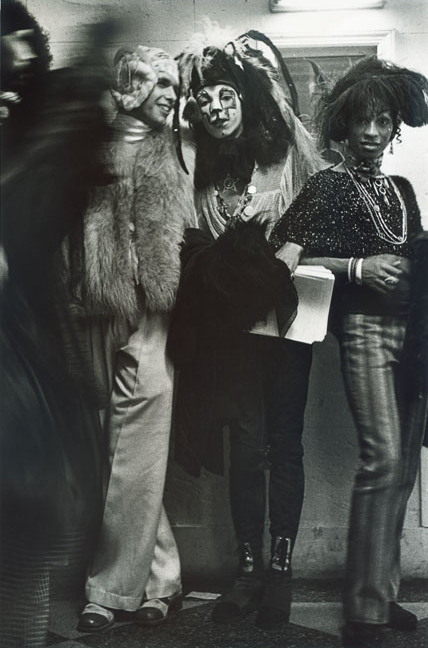Students narrated 20 short videos that describe the images in the context of democracy. In one video, Jimmy Mora ’20 discusses Erika Stone’s Harlem Beggar, taken in the 1950s. An impoverished man smiles as he sits beneath the word “bills” that is printed over and over on a black-and-white wall that’s behind him.
“This might serve as a reminder that we, in part, exist in solidarity with this man as we have all, at one point or another, come to understand the financial pressures that come with being underneath bills and other forms of that,” Mora says. “In this smile, we are reminded that misfortune is not something against which any person is granted immunity, and that we all stand to gain in being more aware and compassionate toward the conditions of our fellow man.
“If many Americans find themselves a few paychecks away from poverty, why do we often stigmatize the homeless and turn a blind eye to their struggles?” he asks. “Moreover, how can our society continue to progress if we are comfortable leaving people behind?”
In another video, Sara Sanchez Rivera ’23 discusses Leonard Freed’s March on Washington, taken in 1963. The photo, which documents a pivotal moment in history, shows men and women exercising their First Amendment rights. “It tells the story of a power struggle and of race,” she says. “To others, it continues to tell the story of the fight for equality and freedom from discrimination.” The issues are still relevant today, she says.
In conjunction with the exhibition, LUAG is hosting a series of related programs that provide a platform for people of differing political perspectives to share their ideas and opinions. A presentation in October with Lehigh journalism professors titled Art in Dialogue: The Media and the Truth examined the ethics and challenges that photojournalists confront in documenting current events. Do photographs and videos convey the truth to the American people? What issues are at stake with the media and the complaints of “fake news”?
Participating were Jack Lule, Iacocca professor and chair of the Department of Journalism and Communication and professor of global studies; Matthew Veto, professor of practice and faculty advisor to The Brown & White student newspaper, and Lehigh videographer Stephanie Veto.
“Photos and video are incredibly powerful tools,” said Stephanie Veto. “There are photos … that have helped change the course of history. They have helped to end wars, create public outcry, show us beauty and horrors around the world and in our own backyard. They can humanize something that seems like it shouldn’t be our problem. Visual journalists give a voice to the voiceless. … You’ve got people stranded during floods and hurricanes, people fighting for their land, losing everything because of addiction, showing the loss from a pandemic, families separated at the borders, refugees from across the world in devastating conditions, the list goes on and on. If you don't see it, it's difficult to learn about it, or to even care. Well, photos and videos can help us care.”
Twenty-two reproductions of key photographs from the Doing Democracy exhibition, including Harlem Beggar and “March on Washington,” are on display along the South Bethlehem Greenway, near the Lehigh campus. Each 4-by-8-foot easel includes a QR code that links to additional information and the short videos narrated by Lehigh students. At an event in October held in conjunction with the SouthSide Arts District, visitors had an opportunity to register to vote, meet community members and create political posters or buttons.
“The underlying message is really about participation,” Crow says. “Democracies, like museums, actually are places that get better the more people participate. … I hope people see this exhibition as not only an invitation, but really a requirement that we all need to participate in making meaning about our world and making informed decisions about our world, regardless of what one's own opinions are.”












